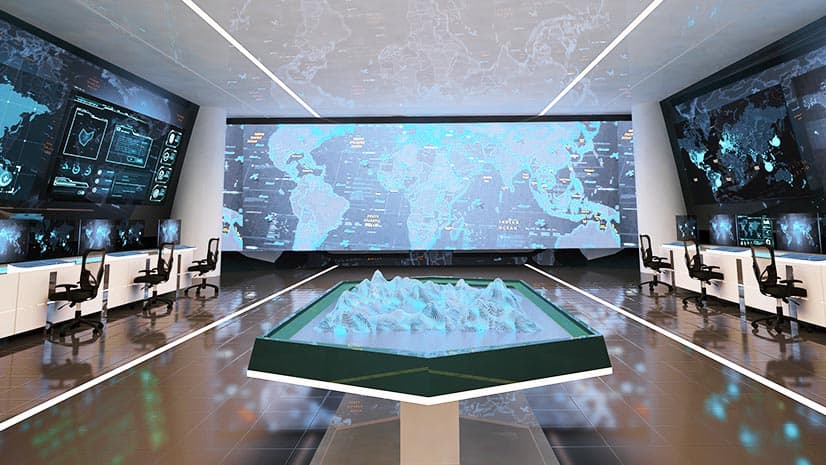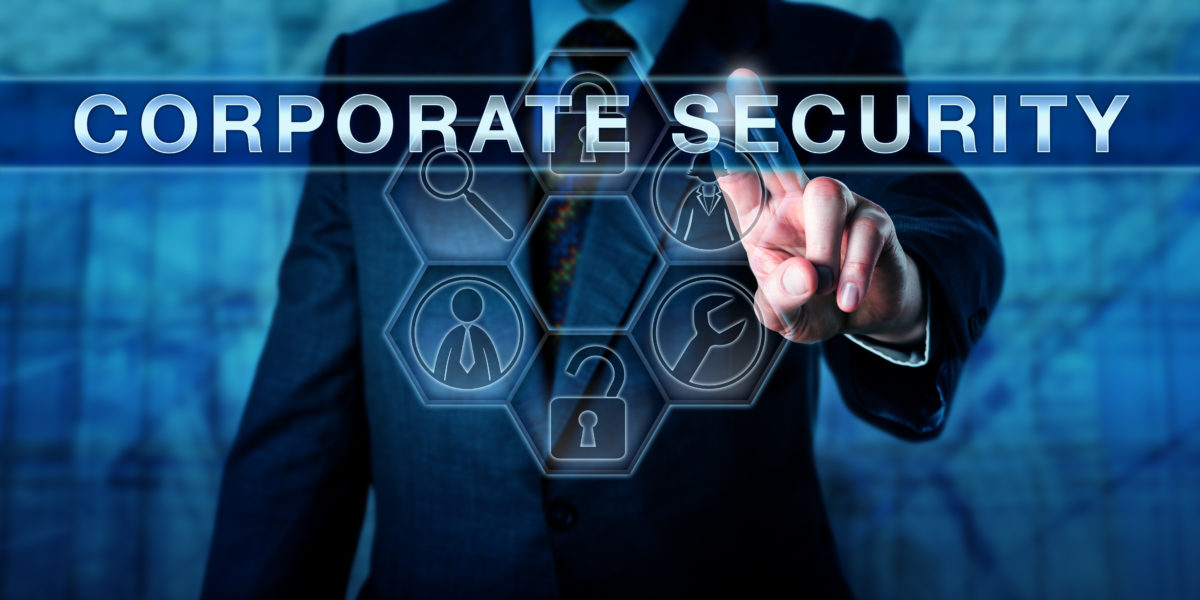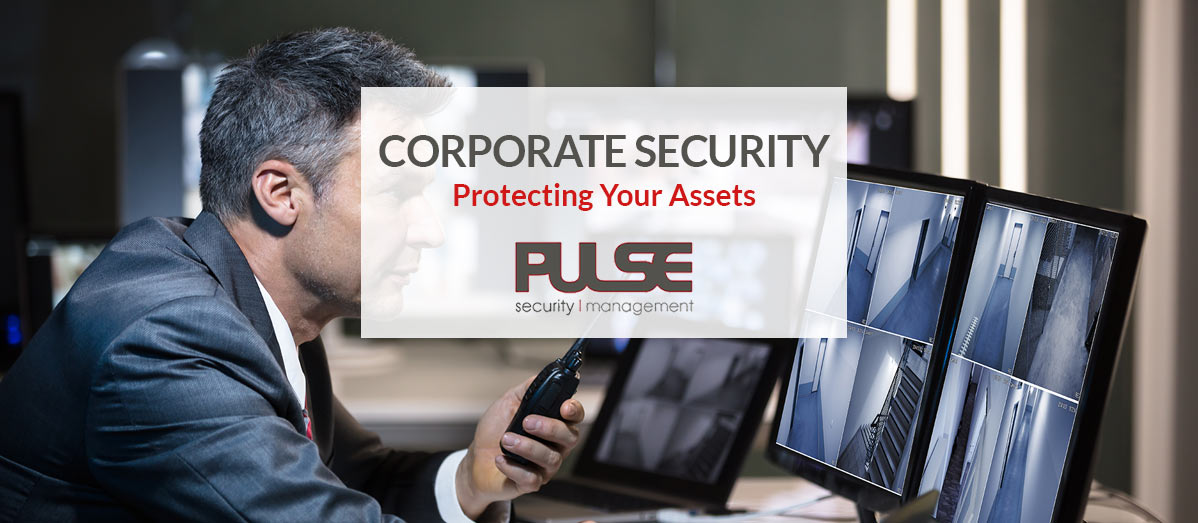Boost Corporate Security: Approaches for a Robust Protection
Wiki Article
From Cybersecurity to Physical Measures: Strengthening Corporate Safety in an Altering World
In today's rapidly developing electronic landscape, the relevance of company protection can not be overstated. As cyber threats end up being progressively sophisticated and widespread, companies need to surpass standard cybersecurity steps to secure their possessions and procedures - corporate security. This is where the assimilation of physical safety and security measures comes to be vital. By integrating the toughness of both cybersecurity and physical protection, business can produce a thorough defense strategy that attends to the diverse series of hazards they encounter. In this conversation, we will certainly explore the transforming danger landscape, the requirement to integrate cybersecurity and physical safety and security, the application of multi-factor authentication measures, the significance of employee recognition and training, and the adjustment of protection procedures for remote labor forces. By examining these vital locations, we will certainly obtain useful understandings right into exactly how companies can enhance their corporate safety in an ever-changing globe.Understanding the Transforming Threat Landscape
The advancing nature of the contemporary world demands a comprehensive understanding of the altering risk landscape for effective corporate safety and security. It is vital for companies to stay notified and adapt their protection determines to address these developing threats.One trick element of comprehending the transforming threat landscape is acknowledging the different kinds of threats that companies face. In addition, physical risks such as burglary, vandalism, and corporate espionage remain widespread worries for businesses.
Tracking and analyzing the threat landscape is important in order to identify possible dangers and vulnerabilities. This involves remaining updated on the most current cybersecurity patterns, assessing hazard intelligence reports, and conducting normal danger assessments. By recognizing the altering hazard landscape, companies can proactively implement suitable protection steps to reduce risks and protect their possessions, track record, and stakeholders.
Integrating Cybersecurity and Physical Protection
Incorporating cybersecurity and physical safety is vital for comprehensive business defense in today's interconnected and digital landscape. As organizations significantly rely upon modern technology and interconnected systems, the limits between physical and cyber hazards are coming to be obscured. To successfully guard against these dangers, an alternative approach that integrates both cybersecurity and physical protection steps is vital.Cybersecurity concentrates on protecting electronic properties, such as data, networks, and systems, from unauthorized access, interruption, and theft. Physical safety and security, on the other hand, includes actions to protect physical possessions, people, and facilities from dangers and susceptabilities. By incorporating these 2 domains, companies can address vulnerabilities and dangers from both digital and physical angles, consequently boosting their overall protection position.
The integration of these two self-controls enables a more detailed understanding of protection threats and allows a unified response to cases. Physical accessibility controls can be boosted by integrating them with cybersecurity procedures, such as two-factor verification or biometric identification. Similarly, cybersecurity actions can be complemented by physical safety measures, such as surveillance electronic cameras, alarms, and safe access factors.

Executing Multi-Factor Authentication Procedures
As organizations significantly prioritize detailed safety and security steps, one efficient strategy is the execution of multi-factor verification actions. Multi-factor verification (MFA) is a safety and security approach that requires individuals to offer multiple types of identification to access a system or application. This method adds an extra layer of defense by incorporating something the user understands, such as a password, with something they have, like a fingerprint or a protection token.By implementing MFA, companies can dramatically boost their safety pose - corporate security. Typical password-based authentication has its constraints, as passwords can be conveniently compromised or neglected. MFA reduces these threats by including an extra verification factor, making it harder for unapproved people to get to sensitive information
There are numerous sorts of multi-factor authentication techniques readily available, including biometric verification, SMS-based verification codes, and equipment tokens. Organizations require to assess their details demands and pick the most proper MFA solution for their requirements.
Nevertheless, the implementation of MFA must be thoroughly prepared and implemented. It is important to strike a balance between security and usability to avoid user disappointment and resistance. Organizations ought to also take into consideration possible compatibility concerns and provide adequate training and assistance to ensure a smooth transition.
Enhancing Staff Member Recognition and Training
To strengthen corporate safety and security, companies should prioritize improving employee understanding and training. In today's quickly progressing hazard landscape, workers play a vital duty in securing an organization's delicate info and possessions. Regrettably, numerous protection breaches happen because of human error or absence of understanding. Organizations need to spend in comprehensive training programs to educate their workers about possible dangers Homepage and the best practices for mitigating them.Effective employee awareness and training programs should cover a wide variety of topics, consisting of data protection, phishing strikes, social engineering, password hygiene, and physical protection procedures. These programs ought to be tailored to the details needs and obligations of different employee duties within the company. Routine training sessions, simulations, and workshops can assist employees establish the required abilities and understanding to react and recognize to protection dangers efficiently.
Additionally, companies should encourage a society of protection recognition and give recurring updates and pointers to keep employees notified regarding the most up to date hazards and next reduction strategies. This can be done via interior interaction networks, such as e-newsletters, intranet websites, and email campaigns. By cultivating a security-conscious workforce, organizations can substantially reduce the chance of protection cases and protect their beneficial properties from unauthorized accessibility or compromise.

Adapting Safety And Security Actions for Remote Labor Force
Adapting corporate security procedures to accommodate a remote labor force is essential in making certain the defense of delicate info and possessions (corporate security). With the boosting pattern of remote work, organizations have to implement ideal safety steps to minimize the risks connected with this brand-new way of workingOne essential element of adapting safety measures for remote work is establishing safe and secure interaction channels. Encrypted messaging systems and virtual personal networks (VPNs) can assist protect delicate info and protect against unauthorized accessibility. Furthermore, organizations need to impose using solid passwords and multi-factor authentication to boost the safety of remote accessibility.
Another crucial factor to consider is the application of safe remote access remedies. This includes supplying staff members with protected accessibility to company resources and information through virtual desktop infrastructure (VDI), remote desktop procedures (RDP), or cloud-based solutions. These modern technologies make sure that delicate details continues to be protected while enabling staff members to execute their roles efficiently.

Last but not least, detailed safety and security understanding training is important for remote staff members. Educating sessions should cover best practices for securely accessing and handling delicate info, identifying and reporting phishing efforts, and keeping the total cybersecurity hygiene.
Conclusion
In final thought, as the threat landscape continues to develop, it is important for organizations to strengthen their security gauges both in the cyber and physical domains. Incorporating cybersecurity and physical security, carrying out multi-factor verification measures, and enhancing worker understanding and training are crucial actions towards attaining robust business safety and security.In this discussion, we will discover the changing hazard landscape, the requirement to incorporate cybersecurity and physical safety, the execution of multi-factor authentication steps, the importance of worker awareness and training, and the adjustment of protection steps for remote labor forces. Cybersecurity procedures can be matched by physical protection measures, such as monitoring electronic cameras, alarms, and safe and secure access points.
As organizations progressively focus on thorough protection actions, one reliable approach is the implementation of multi-factor verification actions.In verdict, as the danger landscape proceeds to progress, it is important for organizations to reinforce their safety measures both in the cyber and physical domain names. Incorporating cybersecurity and physical protection, executing multi-factor authentication measures, and boosting employee recognition and training are vital steps in the direction of attaining durable corporate protection.
Report this wiki page